Husheng Han
TensorTEE: Unifying Heterogeneous TEE Granularity for Efficient Secure Collaborative Tensor Computing
Jul 12, 2024
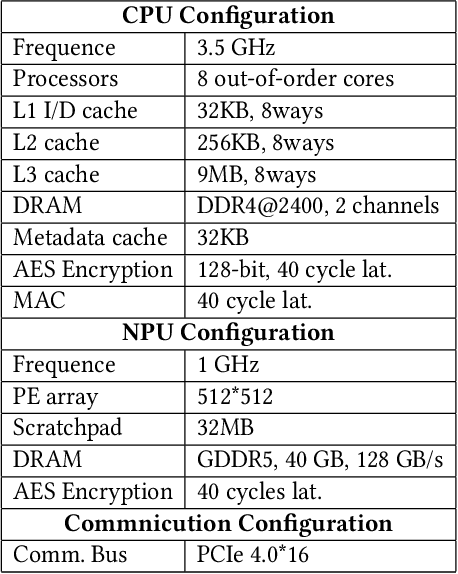
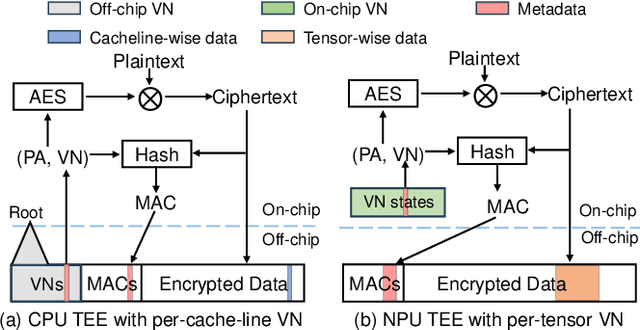
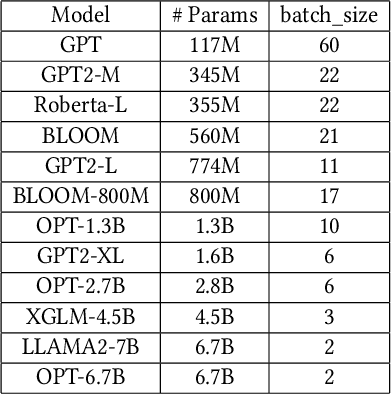
Abstract:Heterogeneous collaborative computing with NPU and CPU has received widespread attention due to its substantial performance benefits. To ensure data confidentiality and integrity during computing, Trusted Execution Environments (TEE) is considered a promising solution because of its comparatively lower overhead. However, existing heterogeneous TEE designs are inefficient for collaborative computing due to fine and different memory granularities between CPU and NPU. 1) The cacheline granularity of CPU TEE intensifies memory pressure due to its extra memory access, and 2) the cacheline granularity MAC of NPU escalates the pressure on the limited memory storage. 3) Data transfer across heterogeneous enclaves relies on the transit of non-secure regions, resulting in cumbersome re-encryption and scheduling. To address these issues, we propose TensorTEE, a unified tensor-granularity heterogeneous TEE for efficient secure collaborative tensor computing. First, we virtually support tensor granularity in CPU TEE to eliminate the off-chip metadata access by detecting and maintaining tensor structures on-chip. Second, we propose tensor-granularity MAC management with predictive execution to avoid computational stalls while eliminating off-chip MAC storage and access. Moreover, based on the unified granularity, we enable direct data transfer without re-encryption and scheduling dilemmas. Our evaluation is built on enhanced Gem5 and a cycle-accurate NPU simulator. The results show that TensorTEE improves the performance of Large Language Model (LLM) training workloads by 4.0x compared to existing work and incurs only 2.1% overhead compared to non-secure training, offering a practical security assurance for LLM training.
Pushing the Limits of Machine Design: Automated CPU Design with AI
Jun 27, 2023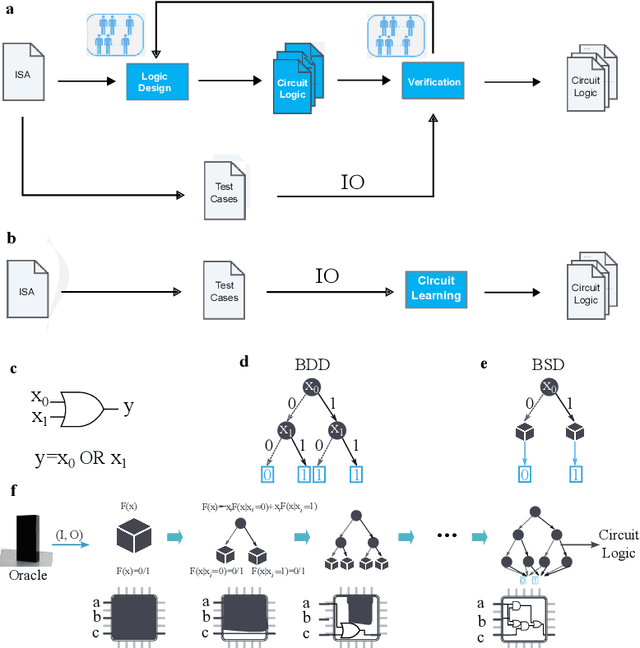
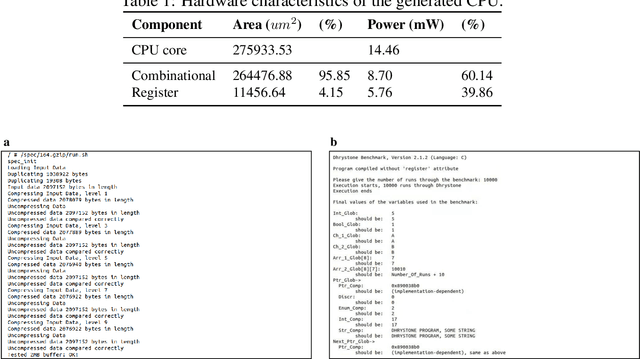

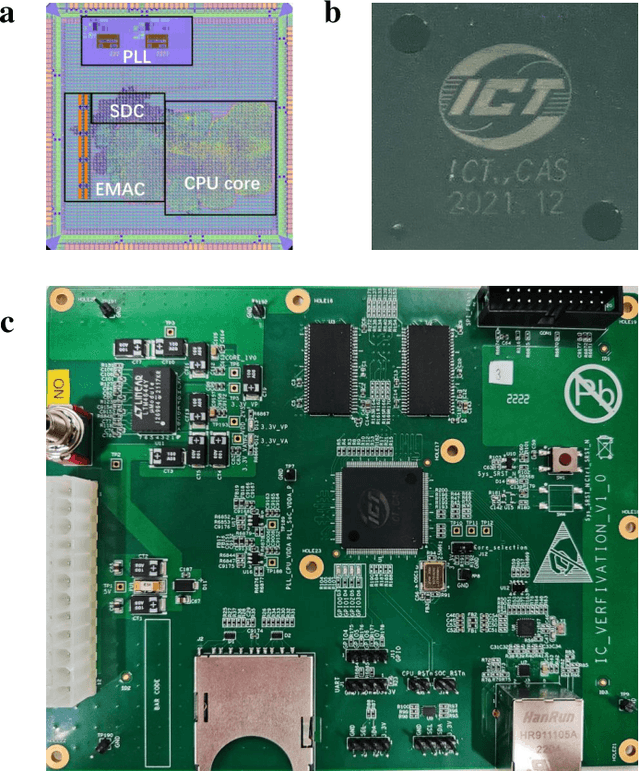
Abstract:Design activity -- constructing an artifact description satisfying given goals and constraints -- distinguishes humanity from other animals and traditional machines, and endowing machines with design abilities at the human level or beyond has been a long-term pursuit. Though machines have already demonstrated their abilities in designing new materials, proteins, and computer programs with advanced artificial intelligence (AI) techniques, the search space for designing such objects is relatively small, and thus, "Can machines design like humans?" remains an open question. To explore the boundary of machine design, here we present a new AI approach to automatically design a central processing unit (CPU), the brain of a computer, and one of the world's most intricate devices humanity have ever designed. This approach generates the circuit logic, which is represented by a graph structure called Binary Speculation Diagram (BSD), of the CPU design from only external input-output observations instead of formal program code. During the generation of BSD, Monte Carlo-based expansion and the distance of Boolean functions are used to guarantee accuracy and efficiency, respectively. By efficiently exploring a search space of unprecedented size 10^{10^{540}}, which is the largest one of all machine-designed objects to our best knowledge, and thus pushing the limits of machine design, our approach generates an industrial-scale RISC-V CPU within only 5 hours. The taped-out CPU successfully runs the Linux operating system and performs comparably against the human-designed Intel 80486SX CPU. In addition to learning the world's first CPU only from input-output observations, which may reform the semiconductor industry by significantly reducing the design cycle, our approach even autonomously discovers human knowledge of the von Neumann architecture.
Flew Over Learning Trap: Learn Unlearnable Samples by Progressive Staged Training
Jun 03, 2023



Abstract:Unlearning techniques are proposed to prevent third parties from exploiting unauthorized data, which generate unlearnable samples by adding imperceptible perturbations to data for public publishing. These unlearnable samples effectively misguide model training to learn perturbation features but ignore image semantic features. We make the in-depth analysis and observe that models can learn both image features and perturbation features of unlearnable samples at an early stage, but rapidly go to the overfitting stage since the shallow layers tend to overfit on perturbation features and make models fall into overfitting quickly. Based on the observations, we propose Progressive Staged Training to effectively prevent models from overfitting in learning perturbation features. We evaluated our method on multiple model architectures over diverse datasets, e.g., CIFAR-10, CIFAR-100, and ImageNet-mini. Our method circumvents the unlearnability of all state-of-the-art methods in the literature and provides a reliable baseline for further evaluation of unlearnable techniques.
Real-Time Robust Video Object Detection System Against Physical-World Adversarial Attacks
Aug 19, 2022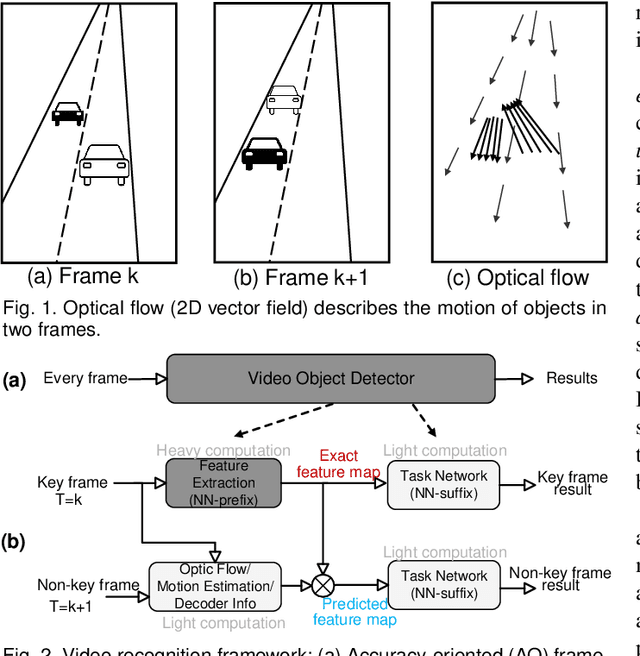

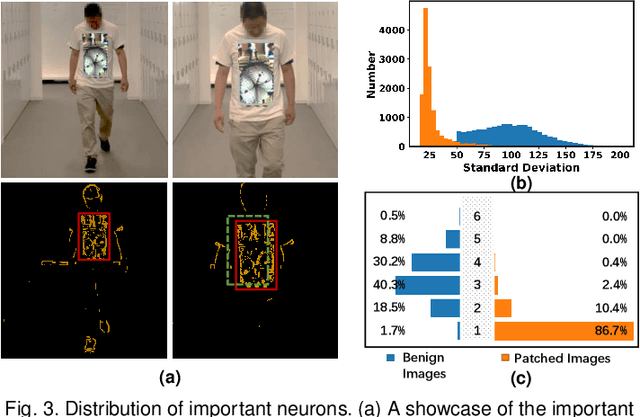
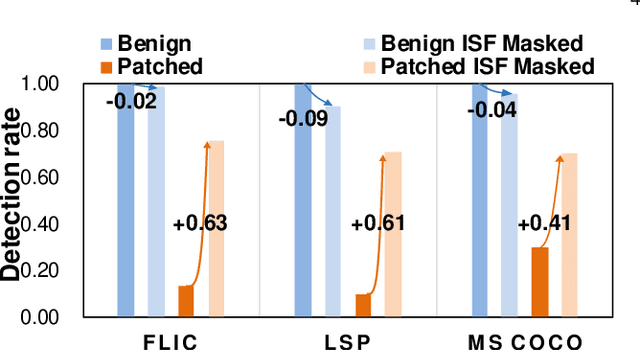
Abstract:DNN-based video object detection (VOD) powers autonomous driving and video surveillance industries with rising importance and promising opportunities. However, adversarial patch attack yields huge concern in live vision tasks because of its practicality, feasibility, and powerful attack effectiveness. This work proposes Themis, a software/hardware system to defend against adversarial patches for real-time robust video object detection. We observe that adversarial patches exhibit extremely localized superficial feature importance in a small region with non-robust predictions, and thus propose the adversarial region detection algorithm for adversarial effect elimination. Themis also proposes a systematic design to efficiently support the algorithm by eliminating redundant computations and memory traffics. Experimental results show that the proposed methodology can effectively recover the system from the adversarial attack with negligible hardware overhead.
ScaleCert: Scalable Certified Defense against Adversarial Patches with Sparse Superficial Layers
Nov 04, 2021

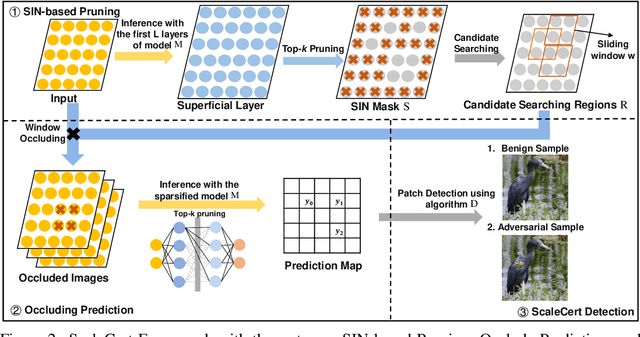
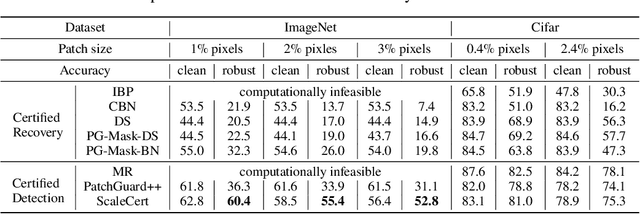
Abstract:Adversarial patch attacks that craft the pixels in a confined region of the input images show their powerful attack effectiveness in physical environments even with noises or deformations. Existing certified defenses towards adversarial patch attacks work well on small images like MNIST and CIFAR-10 datasets, but achieve very poor certified accuracy on higher-resolution images like ImageNet. It is urgent to design both robust and effective defenses against such a practical and harmful attack in industry-level larger images. In this work, we propose the certified defense methodology that achieves high provable robustness for high-resolution images and largely improves the practicality for real adoption of the certified defense. The basic insight of our work is that the adversarial patch intends to leverage localized superficial important neurons (SIN) to manipulate the prediction results. Hence, we leverage the SIN-based DNN compression techniques to significantly improve the certified accuracy, by reducing the adversarial region searching overhead and filtering the prediction noises. Our experimental results show that the certified accuracy is increased from 36.3% (the state-of-the-art certified detection) to 60.4% on the ImageNet dataset, largely pushing the certified defenses for practical use.
 Add to Chrome
Add to Chrome Add to Firefox
Add to Firefox Add to Edge
Add to Edge